Fujifilm XF1 Review
Fujifilm XF1
The XF1 combines stylish retro design and advanced shooting features to good effect.
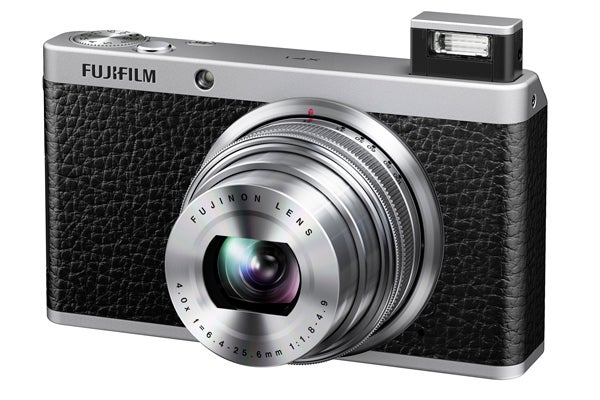
Verdict
Pros
- Fantastic design
- Fast f/1.8 maximum aperture at 25mm
- Full manual controls & Raw capture
Cons
- Quite a bit of play in zoom at 100mm
- Worries over long-term durability of zoom
- Slow performance at high ISO settings
Key Specifications
- Review Price: £360.00
- 2/3in 12MP EXR CMOS sensor
- 4x optical zoom (25-100mm)
- ISO 100-3200 (exp. to 12,800)
- 1080p Full HD video at 30fps
- 3in, 460k-dot LCD monitor
The Fujifilm XF1 is the sixth model to grace the company’s premium ‘X’ range of digital cameras, and much like the X100, X10, X-Pro1 and also new XE-1 models that have preceded it, the XF1 borrows heavily from retro 35mm rangefinder design to produce a camera that packs a deliberately old-school aesthetic punch, while at the same time incorporating all the very latest digital camera technology within. 
Launched alongside the interchangeable lens XE-1, the XF1 is a fixed zoom compact that has its sights firmly trained on the advanced compact market. As with other models in the Fuji ‘X’ series, the retro design elements combine to lend the XF1 a look and feel of something from yesteryear. However, look beyond the matte aluminium chassis and distinctive leather band and you’ll quickly find that the XF1 is, in fact, packed with all the latest cutting edge technology.
Given the XF1’s positioning as an advanced compact this is, of course, a necessity. Potential buyers aren’t going to buy it just because it looks nice and are likely to be more demanding than most when it comes to the core questions of performance and image quality. Fuji has gone to some lengths to address this with the inclusion of several high-specification imaging features that enable the XF1 to compete at the same level as its advanced compact rivals. 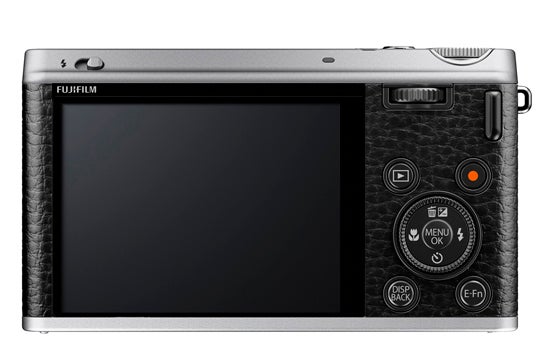
At the heart of the XF1 is a 2/3in 12MP CMOS sensor, which is quite a bit bigger than the 1/2.3in chips found in the vast majority of regular compacts. As with other high-end Fujifilm compacts the XF1’s sensor is of the proprietary EXR variety – which means it uses a unique pixel array that allows the sensor to function in three distinct ways. Entering the EXR menu will allow you to choose between these three unique capture modes, or indeed to set the camera to ‘Auto EXR’ mode, which allows the camera to decide on your behalf which of the three is most suited to the scene you’re shooting.
The first of the three EXR specific modes – Resolution Priority mode – uses all of the pixels individually to ensure maximum resolution. The second – High ISO and Low Noise Priority mode – combines individual pixels in order to boost performance in low light. The third EXR specific mode – Dynamic Range Priority mode – effectively ‘splits’ the pixel array into two camps with one group recording highlight detail and the other recording shadow detail, enabling for better results when shooting high-contrast scenes. When using the sensor in either of the last two modes, maximum resolution does drop to 6MP though. On top of its EXR flexibility the XF1 is also able to offer both JPEG and Raw capture, as well as 1080p Full HD video capture at 30fps – with recorded movies stored in the .MOV file format.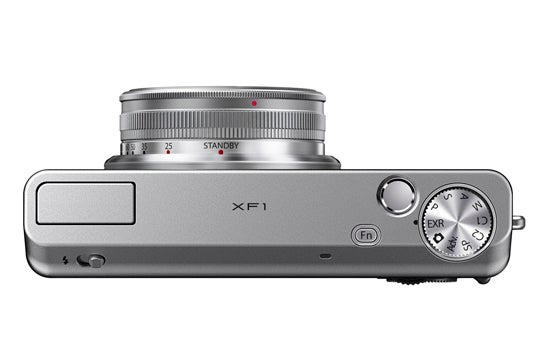
Partnering the XF1’s EXR-CMOS sensor is Fujifilm’s own dual-CPU EXR processor. This is primarily concerned with boosting speed and response times in all areas of the camera’s performance, and to this effect Fuji claims a start-up time of just 0.55 seconds, AF lock-on times of just 0.16 seconds and shot-to-shot speeds of just 0.8 seconds in Single shot mode. In addition, the EXR processor also enables the XF1 to offer an impressive continuous shooting speed of up to 10fps, although in use we found that the XF1 can only actually record eight successive ‘medium’ JPEG frames at this speed, or 16 frames in ‘small’ size before the buffer fills and the camera begins to seize up.
Further enhancing the XF1’s appeal to enthusiast compact users is the 4x zoom lens on the front of the camera. It’s a Fujinon branded optic that offers the 35mm a focal range equivalent of 25-100mm, complete with a fast maximum aperture of f/1.8. Unfortunately though, this maximum aperture is only available at the wideangle end of the focal range, quickly dropping to a not-so-fast f/4.9 at the telephoto end. As with the X10 that came out last year, the XF1’s zoom is manually operated via a zoom ring at the base of the lens barrel and the lens further benefits from built-in optical image stabilisation for sharper shots in low light. Fuji has built a good reputation for building solid Macro capabilities into their cameras and the XF1’s lens continues this trend with the ability to get as close as 3cm away from subjects.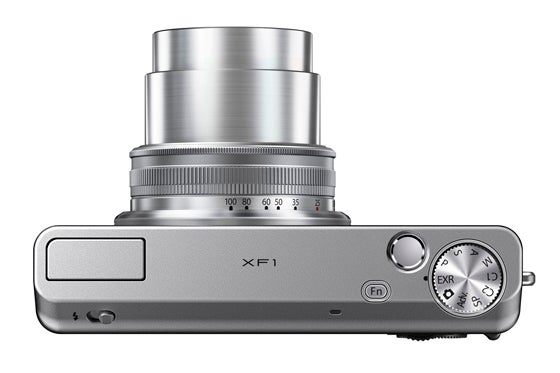
In terms of exposure modes, the Fujifilm XF1 offers a more than generous range of options. In addition to the EXR-specific modes mentioned above, the XF1 also offers the full range of ‘PASM’ shooting modes, namely Program, Aperture-priority, Shutter-priority and full Manual. For point and shoot duties there’s a standard Automatic shooting mode, along with a range of Scene positions to choose from and a couple of Custom slots that you can set up to your own preferences.
In addition, the XF1 also offers three ‘Advanced’ exposure modes – Motion Panorama, Pro Focus, and Pro Low-Light – all of which essentially rely on taking multiple exposures to attain their end effect. Motion Panorama is a mode that allows you to create panoramic images simply by sweeping the camera in a predetermined direction with the shutter button held down – the camera automatically stitching together all the frames into a single ultra-wide shot. Pro Focus mode, meanwhile, is a portrait-specific mode that creates a shallow depth of field effect by taking multiple frames and then processing added blur into the background behind the main subject. Last but not least, Pro-Light Mode aims to produce cleaner images in low light by taking multiple exposures and then blending them together to reduce the visible effects of noise.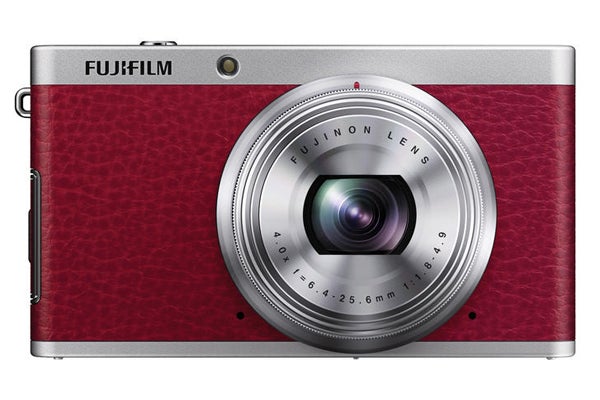
It’s also possible to alter the look of your processed JPEGs thanks to the range of built-in Fujifilm film simulation modes and should you want to avoid using a digital darkroom altogether then the XF1 also offers a range of built-in digital filter effects, including ‘Pop Colour’, ‘Toy Camera’ and ‘High-key’. For composing and evaluative purposes the rear of the XF1 is fitted with a fixed a 3in LCD screen that offers a resolution of 460k-dots. While it’s not quite as sharp as a 921k-dot screen, it’s still very much in keeping with what’s found on many other enthusiast compacts.
As with many other cameras from the Fujifilm ‘X’ range, the XF1 is an undoubtedly eye-catching model that manages to stand out from the crowd on account of its retro styling. The rectangular body is wrapped in a synthetic leather band, which is only broken up by the lens on the front and the screen and various control buttons on the back. Where there isn’t any faux leather, the camera is treated to a classy matte aluminium finish. The leather and aluminium combine to give the XF1 a classy appearance, an impression that’s confirmed when you actually pick it up for the first time. For those looking to colour co-ordinate the XF1 is available in a choice of red, tan or black leather finishes.
We’ve seen it before with Fujifilm ‘X’ series compacts – most notably the X10 – but the manually operated zoom lens of the XF1 is something that’s really worth shouting about. In addition to being easier and more intuitive to use than a traditional zoom-rocker control, the lens is treated to a series of markings that indicate the focal length at which you’re shooting. We also like how the lens can be rotated around and folded right back into the camera’s body, creating a slim and easily pocketable camera. 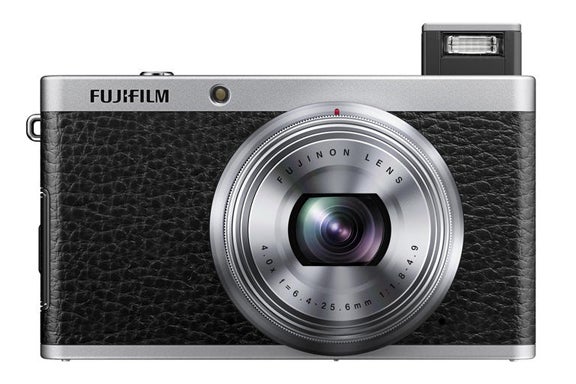
The XF1’s top plate also demonstrates a keen eye for design, with a customisable Fn button the sole accompaniment to the camera’s shutter release and mode dial selector. This minimalist approach continues on the back of the camera, with the control wheel by the thumb rest joined by just four buttons: a Playback mode button, a one-touch movie record button, a Display toggle button and another customisable Function button.
While the XF1’s claimed start-up speed is certainly impressive, actually getting your hands in the right place to rotate the lens and switch it on can sometimes prove a little fiddly, and as a result can prolong the start-up process well beyond the claimed 0.55 seconds. Thankfully though, it’s possible to leave the XF1 in standby mode with the lens slightly protruding; if you’re using the camera to capture quick-reaction candid shots then this is probably a better option. 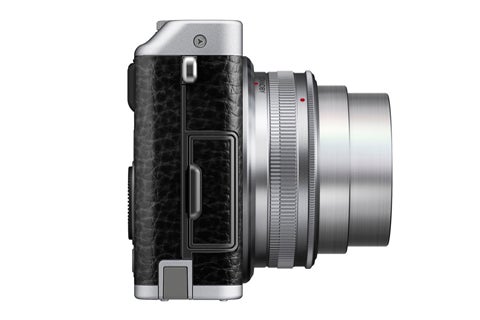
Once switched on, the XF1 generally offers good performance. Fuji claims the XF1’s autofocus lock-on times as quick as 0.16 seconds and although we weren’t totally convinced that our test model was quite as fast as that autofocus performance is nonetheless speedy and responsive, and certainly doesn’t keep you waiting while the photographic moment passes. We also found the XF1’s speedy AF performance to be accurate too, with the AF module consistently selecting the correct focus point to lock on with.
One criticism we do have of the XF1 is its operational speed when used at high ISO settings. Up to ISO 800 there’s no problem, with speedy shot-to-shot performance. However, once you go beyond ISO 800 the camera begins to take a noticeable amount of time to process images – no doubt on account of the in-camera noise reduction processing. Although you should only have to use these kinds of settings when faced with really poor light, the delays encountered at higher ISO settings are nonetheless unwelcome. 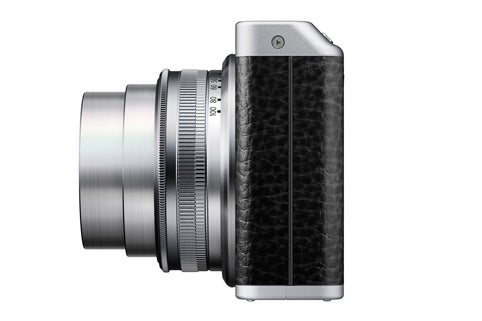
Images quality is generally quite impressive for a compact camera of this type and price. Given that the XF1 employs the same 2/3in sensor found in the acclaimed Fujifilm X10, it’s no great surprise to discover that it produces much the same level of image quality – minus the ‘white orbs’ issue that plagued early X10 production models of course. The XF1 is able to record an impressive amount of detail with images standing up to scrutiny when enlarged to 100%, thereby enabling you to make larger prints with some degree of confidence.
The 4x Fujinon lens also performs well with good levels of sharpness throughout the frame, with very little in the way of distortion or softening in the edges and corners. Fringing is also well controlled, with only a slight purple halo appearing on extreme high-contrast borders between light and shadow. Dynamic range is impressive for a camera of this type, with plenty of detail retained in both shadow and highlight areas of an image. The XF1 features a range of dynamic range adjustment tools that allow you to take advantage of the EXR sensor’s unique pixel array and, on the whole, these all work quite well. 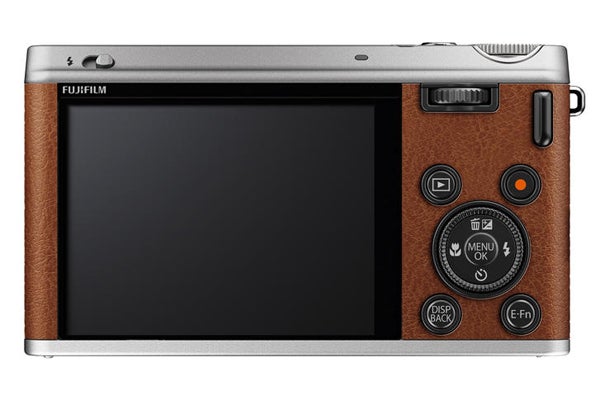
We did find that in regular matrix metering the XF1’s metering system has a slight tendency to underexpose, although it’s not a difficult issue to correct for with a quick alteration of the exposure compensation usually sorting the problem out. White balance is consistent and reliable, and in natural light the XF1 rarely gets things wrong. Even when faced with more challenging conditions, such as a mixture of natural and artificial light, results are more often than not pleasing.
The XF1 captures a pleasing colour palette, with a natural range of tones. If these are too muted for your tastes, then it’s possible to ramp things up with the built-in Film Simulation modes. Despite the aforementioned drop in operational performance, image quality higher ISO settings fairly well maintained with noise generally well controlled.
Verdict
The XF1 enters a competitive field in the form of the enthusiast compact market, where it primarily distinguishes itself from its peers through its smart, retro design. The camera’s leather and matte aluminium finish, along with the manual zoom operation make the XF1 a pleasing camera to hold and use. Retract the lens fully and the camera can also be easily pocketed. Despite these obvious pluses, the XG1 is not without its faults. Even straight out of the box the XF1’s lens suffers from a worrying amount of travel when fully extended, which raises some questions about its long-term durability. Despite otherwise generally quite impressive performance speeds, the camera is also bit laggy at high ISO settings and when shooting Raw files. And although image quality is very good on the whole, noise reduction does affect sharpness at high ISO settings. Overall though, if you’re after a stylish enthusiast compact that will fit readily in to your pocket and produce good images in a range of conditions, then the XF1 is a great choice.
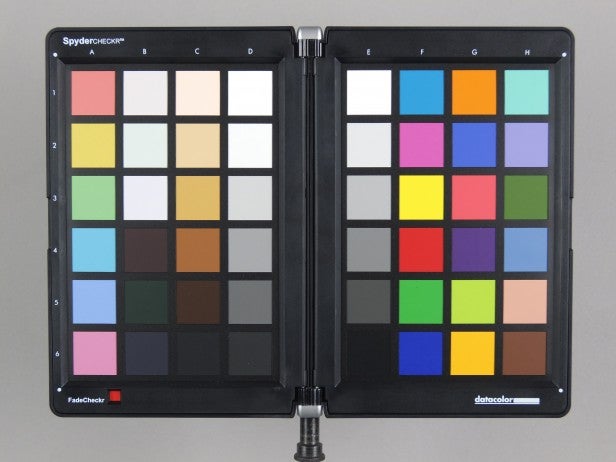
The full-sized image of our colour checker chart, taken at ISO 100
(click to see full size). The images below are 100% crops taken from the
same scene, shot at rising ISO values from ISO 100 to ISO 12,800.
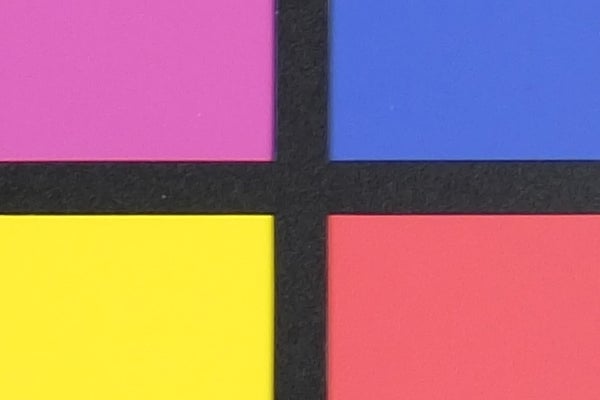
ISO 100

ISO 200

ISO 400

ISO 800

ISO 1600

ISO 3200
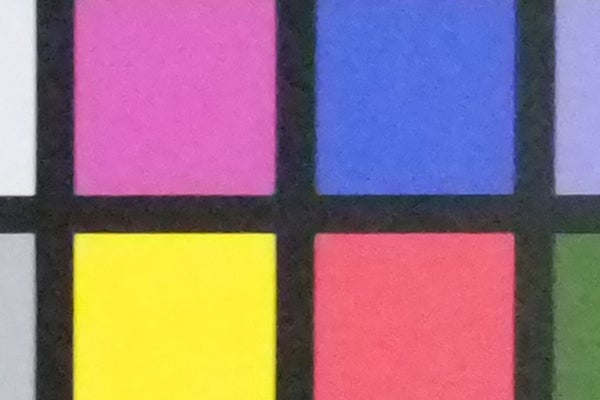
ISO 6400 (expanded mode, max 8MP)
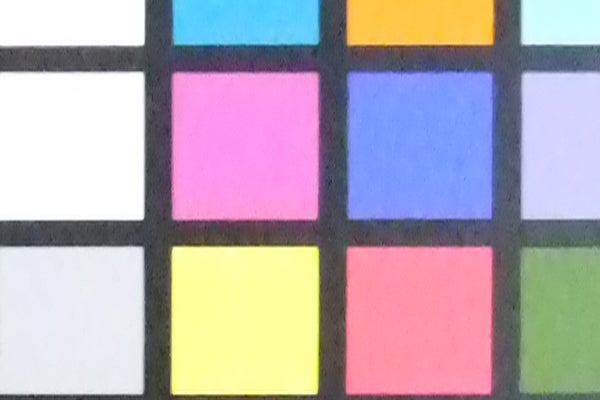
ISO 12,800 (expanded mode, max 4MP)
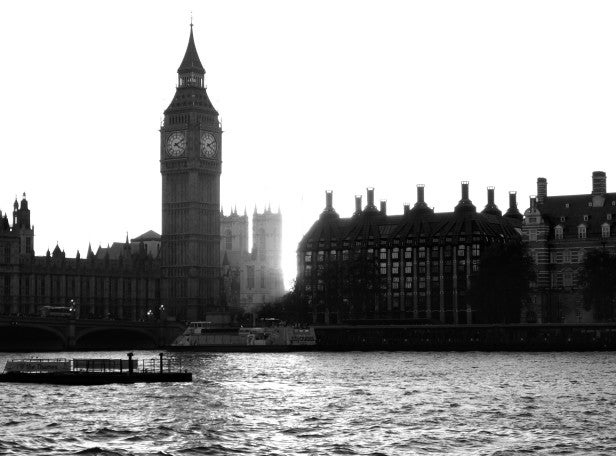
1/400sec @ f/4.9, ISO 200

1/40sec @ f/4.9, ISO 400
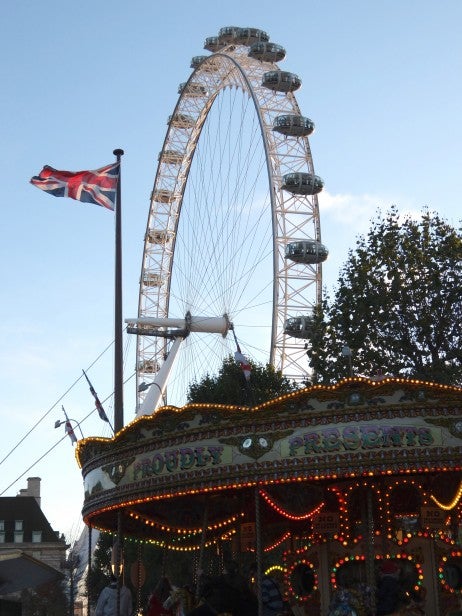
1/5–sec @ f/4.5, ISO 200

1/200sec@ f/5.6, ISO 100

1/40sec @ f/4.9, ISO 100
Trusted Score
Score in detail
-
Value 7
-
Design & Features 9
-
Image Quality 8
-
Build Quality 7

